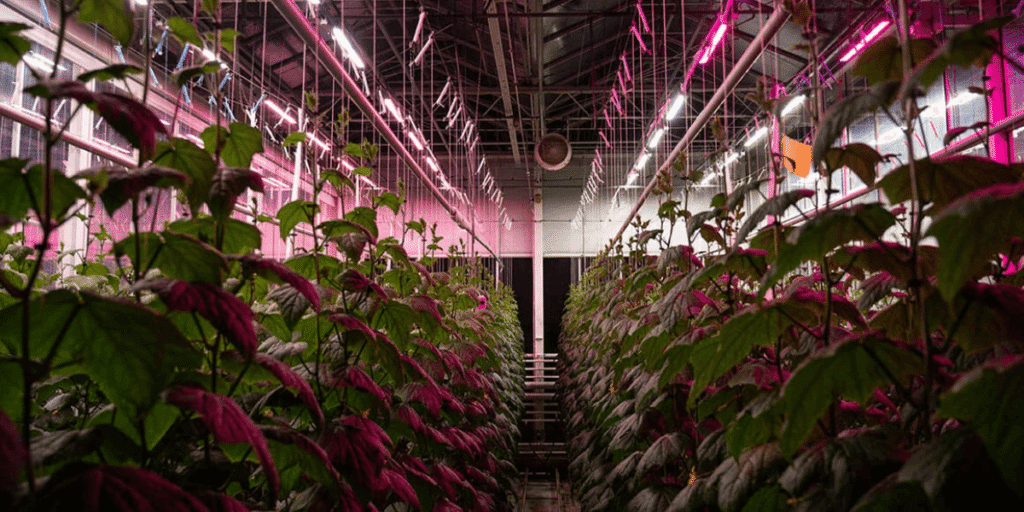Grow Lights Contribute to Farming. Imagine it’s the dead of winter, snow is falling steadily outside, and most gardens have gone dormant. Yet inside your home or greenhouse, you’re harvesting fresh, juicy tomatoes, crisp lettuce, or fragrant herbs. It sounds like a scene from a futuristic movie, but thanks to advances in grow light technology, this is becoming a reality for more and more people.
Grow lights are not just simple bulbs they are powerful tools that let you take control of your growing environment. No matter the season, weather, or natural sunlight availability, you can cultivate vibrant, healthy crops all year long. This means fresh food is no longer limited by nature’s schedule. Whether you are an urban gardener, a hobbyist, or a professional farmer, grow lights are helping to reshape the future of farming. Let’s explore how this technology is making growing fresh produce possible anytime, anywhere.
How Grow Lights Contribute to Overcoming Seasonal Farming Challenges
Traditional outdoor farming is basically at the mercy of the seasons. Freezing winters, scorching summers, unexpected droughts, floods, and ever-changing daylight hours all dictate what you can grow and when. This leads to:
- Seasonal Shortages: Fresh, local produce can be tough to find outside of peak growing seasons.
- Long-Haul Food: A lot of our food travels thousands of miles to reach us, racking up huge transportation costs and a hefty carbon footprint.
- Climate Chaos: Crops become vulnerable to wild weather swings, leading to unpredictable harvests and fluctuating prices.
But here’s where grow lights step in. They directly tackle these problems by creating a perfect, consistent growing environment indoors. Suddenly, your harvest schedule doesn’t care what the calendar says!
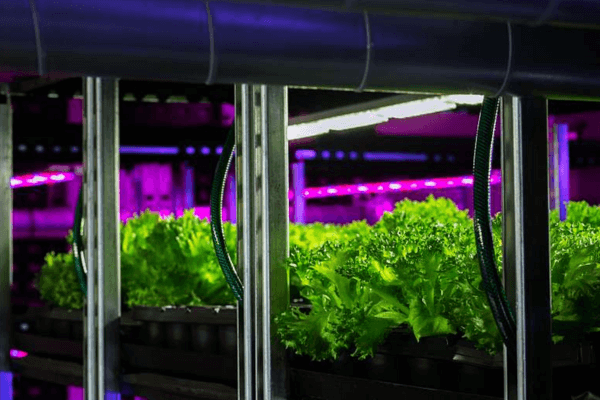
The Role of Grow Lights in Supporting Continuous Crop Growth
The real genius of grow lights is how they precisely mimic, and even improve upon, the sun’s natural cycles. They give your plants exactly what they need, 24/7, every single day of the year.
1. Creating the Perfect Light Conditions to Contribute to Farming Success
Plants don’t just need any light; they crave specific colors of light (what we call the light spectrum) for different parts of their growth journey. Modern LED grow lights are masters at delivering this exact precision.
- Blue Light (400-500nm): Think of this as the “muscle builder.” It’s vital for strong, stocky vegetative growth, helping your plants develop robust stems and lush, healthy leaves. Perfect for that crisp lettuce or aromatic basil.
- Red Light (600-700nm): This is the “blooming booster.” It’s essential for flowering, fruiting, and overall plant maturity. Red light tells your plants it’s time to produce buds, blossoms, and those delicious fruits like tomatoes and strawberries.
- Green Light (500-600nm): While plants reflect a lot of green, it’s not useless! It penetrates deeper into the plant’s canopy, reaching lower leaves and contributing to the plant’s overall bulk.
- Far-Red Light (700-800nm): Not directly involved in photosynthesis, but it subtly influences things like stem stretching and can help trigger flowering in some plants. It also helps light reach deeper into thick foliage.
- UV Light (280-400nm): A little UV light goes a long way. When used carefully, it not only helps protect your plants from pests but also boosts their strength and flavor. Your herbs will smell fresher, taste bolder, and grow with more resilience.
With tunable spectrum LED grow lights, you’re like a personal chef for your plants. You can customize “light recipes” by adjusting the balance of blue, red, and other wavelengths to perfectly match each crop’s needs. Whether you’re encouraging leafy growth or triggering flowering, you have full control and don’t need to rely on sunlight at all.
2. Supplying Precise Light Intensity to Support Healthy Farming Growth
Plants need enough light energy to perform photosynthesis, the incredible process where they create their own food. Grow lights provide the right level of intensity, which we measure in a few key ways.
- PPFD (Photosynthetic Photon Flux Density): This tells you how much usable light (PAR) actually hits your plant’s surface every second (think μmol/m²/s).
- Low-Light Plants (like most lettuce, gentle herbs): They’re happy with about 150-300 PPFD.
- Medium-Light Plants (like peppers, strawberries): These prefer a bit more, thriving between 300-600 PPFD.
- High-Light Plants (like tomatoes, cannabis): These are light hogs and can handle 600-900+ PPFD.
- DLI (Daily Light Integral): This is the total amount of usable light your plant soaks up over a full 24-hour day (measured in mol/m²/day). Understanding DLI lets you perfectly dial in how long your lights are on and how intense they are, ensuring your plant gets its full daily energy quota for prime growth. For instance, a plant might need 12-17 DLI for healthy vegetative growth.
Grow lights allow growers to control both instant brightness (PPFD) and total daily light exposure (DLI), ensuring plants receive perfectly consistent, ideal energy levels day after day, year after year. For a deeper dive into making the most of your plants, discover how grow lights are essential for maximizing crop yields and ensuring consistent production.
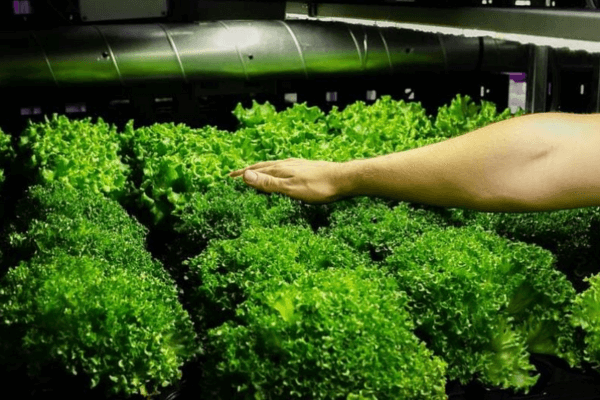
3. Grow Lights’ Contribution to Breaking Seasonal Barriers in Agriculture
Since grow lights are self-sufficient, they completely free you from relying on daylight hours. What does this mean for your garden?
- Consistent Photoperiods: Plants get reliable light-dark cycles (e.g., 16 hours on, 8 hours off), regardless of the season. This keeps them happy, stress-free, and always growing.
- Accelerated Growth Cycles: Optimized light, combined with other controlled environmental factors, can significantly speed up plant growth, leading to more frequent harvests and higher yields per square foot.
- Predictable Abundance: Say goodbye to unpredictable yields due to bad weather or short days. Indoor farms can produce incredibly consistent harvests, making food production more reliable and efficient, no matter what’s happening outside. This constant cycle of production is a key component of smart farming with grow lights, allowing for true year-round cultivation.
Beyond Lighting: How Grow Lights Contribute to Enhanced Farm Productivity
The contribution of grow lights extends beyond just enabling plant growth. They’re fundamental to the operational efficiency and sustainability of modern year-round agriculture.
- Energy Smart & Eco-Friendly: Modern LED grow lights are energy superheroes. They turn electricity into light with hardly any wasted heat. This not only slashes your power bill but also reduces the carbon footprint, especially when you plug into renewable energy sources like solar or wind power. Old-school lights just can’t compare!
- Space Maximization: Grow lights play a crucial role in vertical farming by allowing you to stack multiple layers of crops and grow upwards instead of outwards. This makes it possible to produce a large amount of food in a small space, which is a game-changer in cities where every square meter counts. If you’ve ever dreamed of starting a compact, efficient garden right where you live, vertical farming with grow lights makes it entirely possible.
- Pest-Free & Naturally Clean: Growing indoors under controlled lighting drastically cuts down on pests and diseases. This often means you don’t need harsh chemical pesticides, giving you cleaner, safer produce and a healthier environment all around.
- Taste & Nutrition Supercharged: By fine-tuning light spectrum and intensity, you can actually influence the compounds that give plants their amazing flavor, aroma, and nutritional punch. This means tastier, healthier crops straight from your indoor farm.
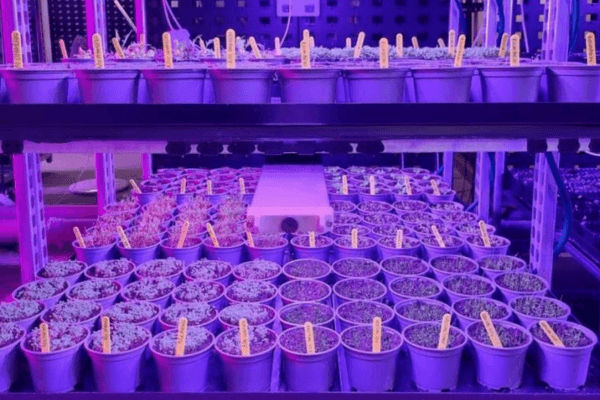
Navigating the Contributions of Grow Lights in Modern Farming Systems
While grow lights are truly revolutionary, there are still a few important factors to keep in mind for year-round farming. The good news is that the technology keeps improving all the time, making it easier and more effective than ever.
Key Considerations When Using Grow Lights to Contribute to Crop Production
- Initial Cost: Top-notch LED grow lights can be a bit of an investment upfront compared to older lighting options or just relying on the sun.
- Energy Management: Even super-efficient LEDs need electricity. For big indoor farms, managing this energy demand carefully and ideally using green energy sources is key.
- Technical Expertise: Optimizing light spectrums, intensities, and schedules for various crops takes a little bit of learning and observation.
Innovations in Grow Lights That Contribute to Sustainable Farming
- Smart LEDs & AI Brains: The future is literally lighting up! AI-powered systems collect real-time data from sensors tracking temperature, humidity, CO2 levels, and even how fast your plants are growing. They then automatically adjust light intensity, color, and duration throughout the day to optimize growth and reduce energy waste. This means you get ultimate precision, minimal energy use, and a truly hands-off growing experience.
- Dynamic Light Recipes: Scientists are constantly discovering new light recipes designed for specific plants to boost flavor, increase nutritional value, and even enhance beneficial compounds like antioxidants.
- Heat Reuse: Even the small amount of heat that LEDs produce can now be captured and reused elsewhere on the farm, making the entire operation much more energy-efficient.
- Miniaturization & Accessibility: As technology improves, grow lights are becoming smaller, more affordable, and easier to use. This makes year-round indoor gardening possible for more home growers and small businesses than ever before.
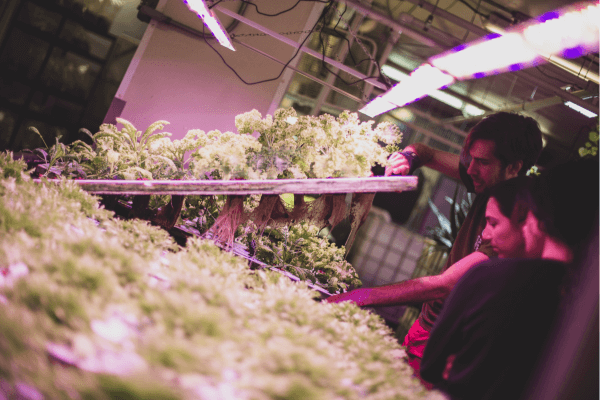
Answering Common Questions About How Grow Lights Contribute to Farming
Q1: How many hours a day should I keep my grow light on? Should I leave it on overnight?
A1: Most plants only need 8-10 hours of light per day. They also need darkness to rest and complete essential growth processes. Leaving the light on 24/7 can actually stress or damage your plants. The best approach? Use a timer to maintain a consistent light-dark cycle.
Q2: Will my electricity bill skyrocket if I use grow lights at home?
A2: Not at all especially if you use energy-efficient LED grow lights. For example, a 30W grow light used 12 hours a day will only cost around $1–2 USD per month, depending on your local electricity rate. For the amount of fresh greens or herbs you can grow, it’s absolutely cost-effective.
Q3: I’m overwhelmed by all the types,bulbs, strips, panels… how do I choose the right one?
A3: Think about your space and what you’re growing:
- Small herbs (basil, mint): Go with a grow bulb or strip light.
- Shelf garden or medium setup: A full-spectrum LED panel works best.
- Larger or professional setups: Use quantum boards or adjustable, high-output fixtures.
The key is even light coverage, the right brightness, and the right spectrum for your plant type.
Q4: I’m using a grow light, but my plants still look unhealthy. Is it the light?
A4: Maybe, but not always. Poor growth can also be caused by:
- Lack of nutrients or improper watering
- Wrong temperature (too cold or too hot)
- Poor airflow or humidity issues
Make sure your lighting is adequate,but don’t forget that plants need a balanced environment to thrive.
Q5: Are grow lights harmful to people? Can they hurt my eyes or disturb my sleep?
A5: Standard grow lights are safe when used properly. That said:
- Avoid staring directly at the light, especially those with strong blue or UV components.
- If you’re using them in a shared or bedroom space, consider shielding the light or choosing warmer-spectrum options.
- Lights with a strong blue cast can disrupt sleep if left on at night, so keep them out of sleeping areas when possible.
The Bright Future of Food: Grow Lights’ Contribution to Modern Agriculture
Grow lights are truly at the heart of year-round farming. They’re transforming where and how we grow our food. By precisely controlling the light environment, they make it possible to enjoy steady, abundant harvests regardless of the season or location. As these lights become more efficient, smarter, and easier to use, their impact on building a resilient, local, and sustainable food system will only keep growing.
Embrace the power of light and be part of the movement that’s bringing fresh, homegrown food to our tables every single day of the year.
Getting Started: How Grow Lights Contribute to Better Farming Yields
Don’t let the seasons limit your green thumb! Whether you’re starting a small windowsill garden, managing a high-tech commercial farm, or exploring new ways to grow fresh produce indoors, advanced grow lights and vertical farming technologies are reshaping what’s possible. With the right tools, you can accelerate plant growth, maximize any space, and enjoy fresh, vibrant harvests all year round no matter where you are or how much room you have.
Visit www.greenfuturelight.com to explore our range of high-performance, energy-efficient LED grow lights and vertical farming solutions designed for growers at every level. From first-time hobbyists to large-scale producers, we’re here to help you achieve outstanding results with ease.
Looking for expert advice tailored to your unique growing goals? Reach out to our horticultural lighting specialists. We’re ready to guide you toward smarter solutions, bigger yields, and a more sustainable future.
Let’s grow together, all year long! Follow us on Instagram @Greenfuturelight and join a vibrant global community that’s redefining agriculture one crop at a time.

